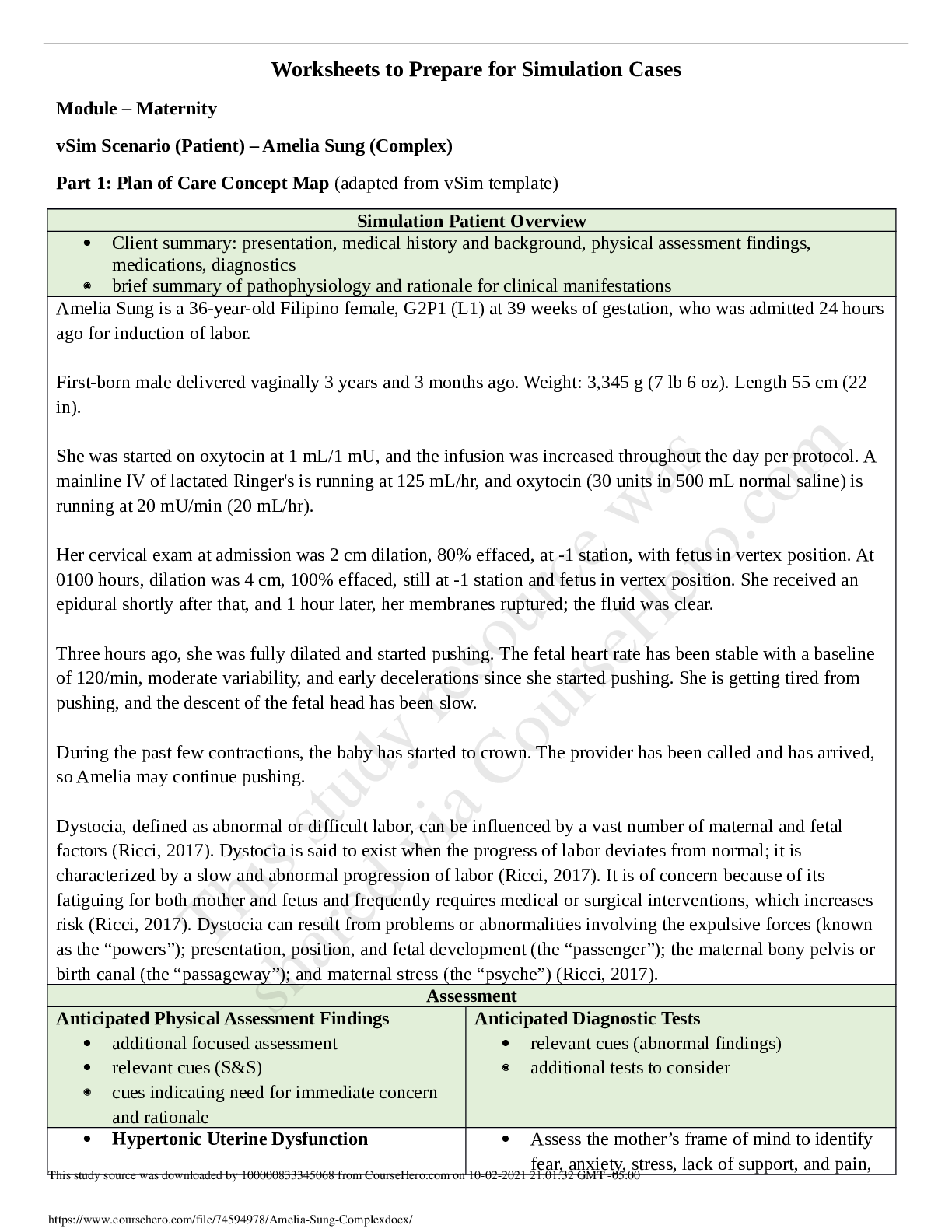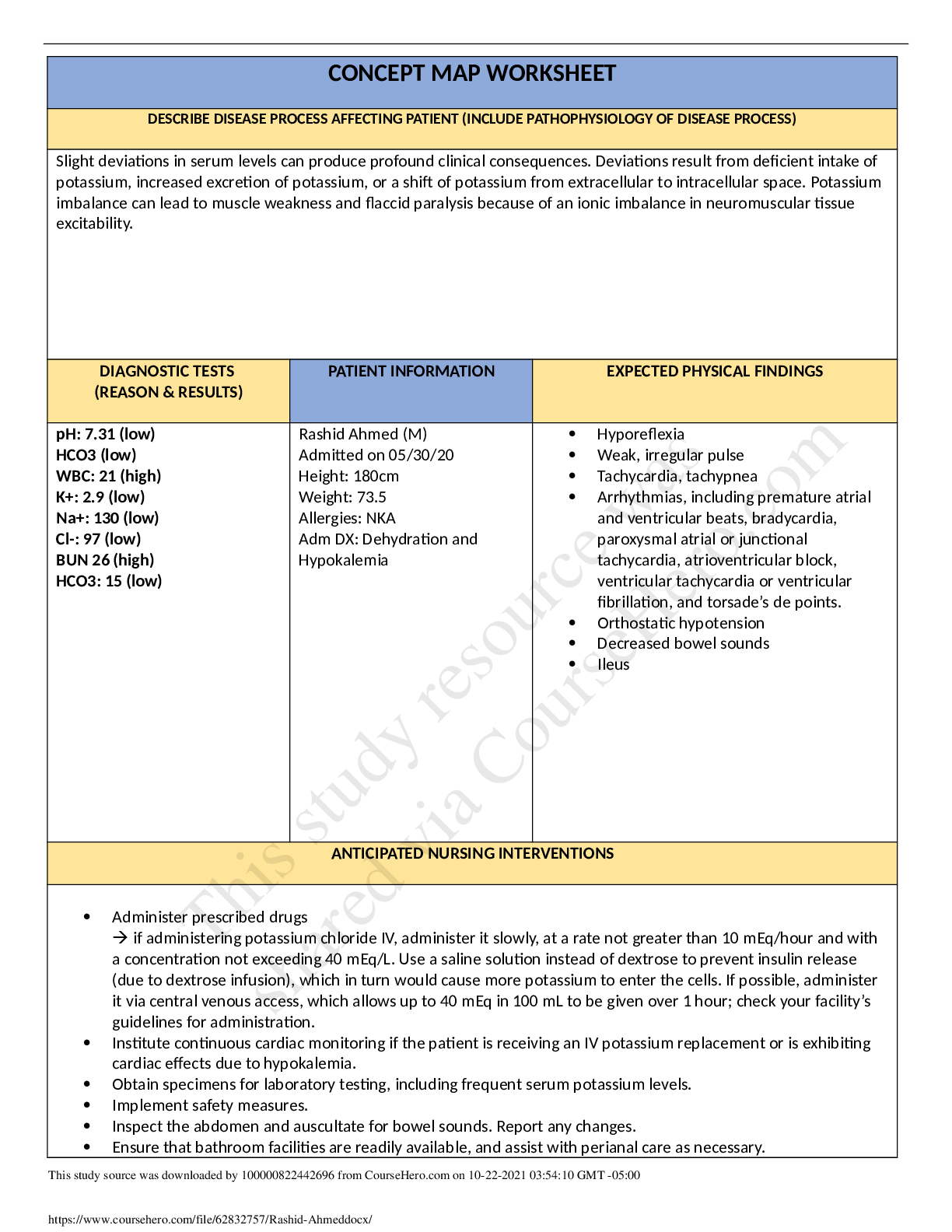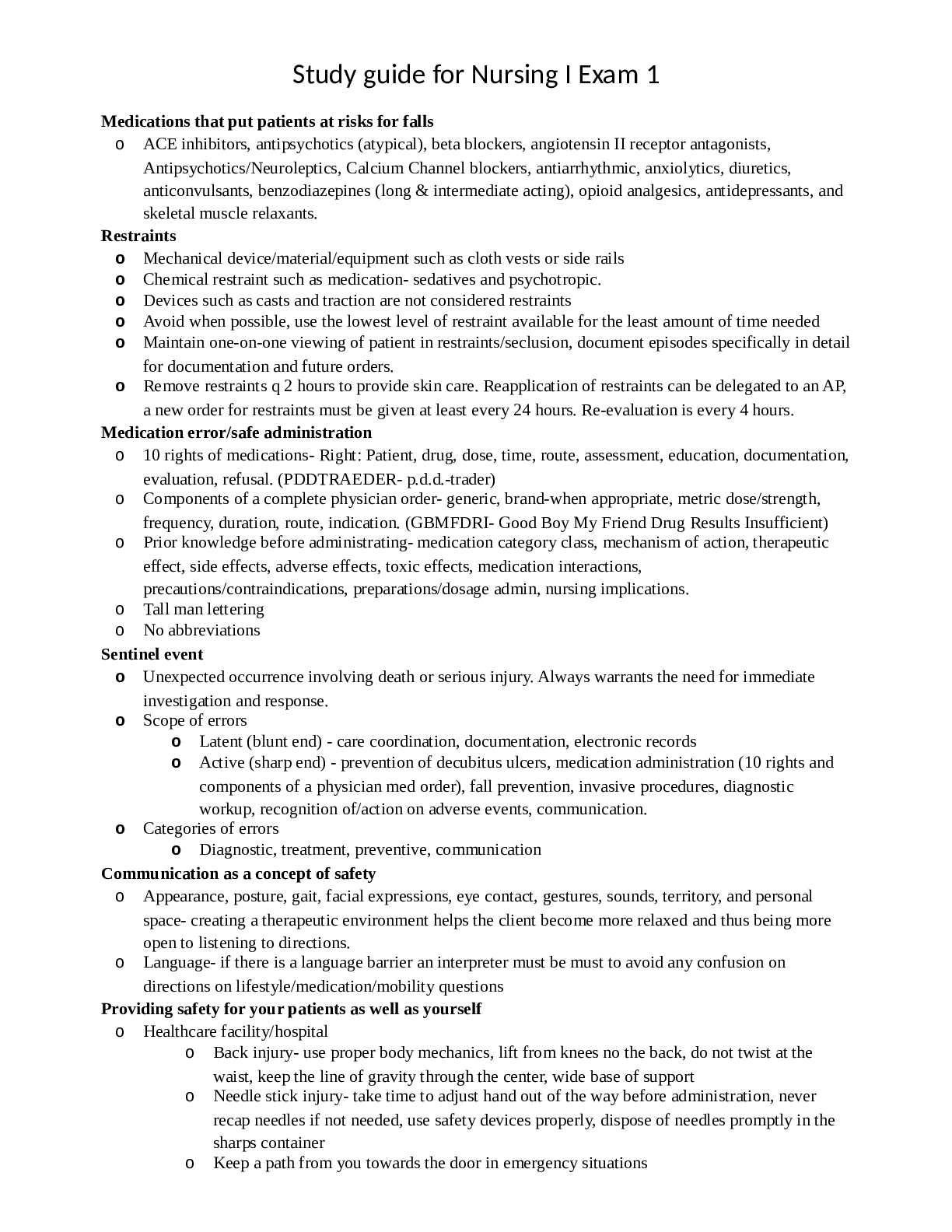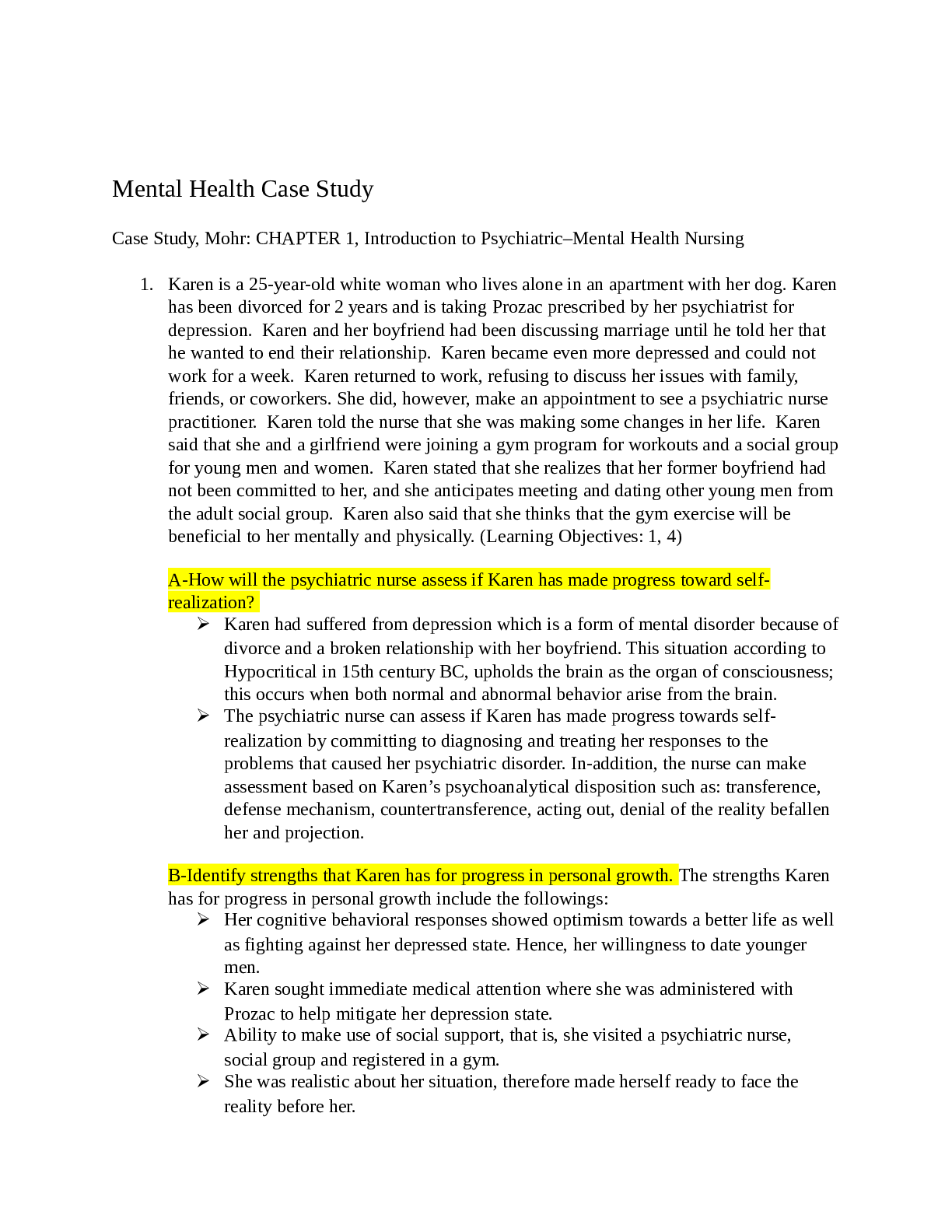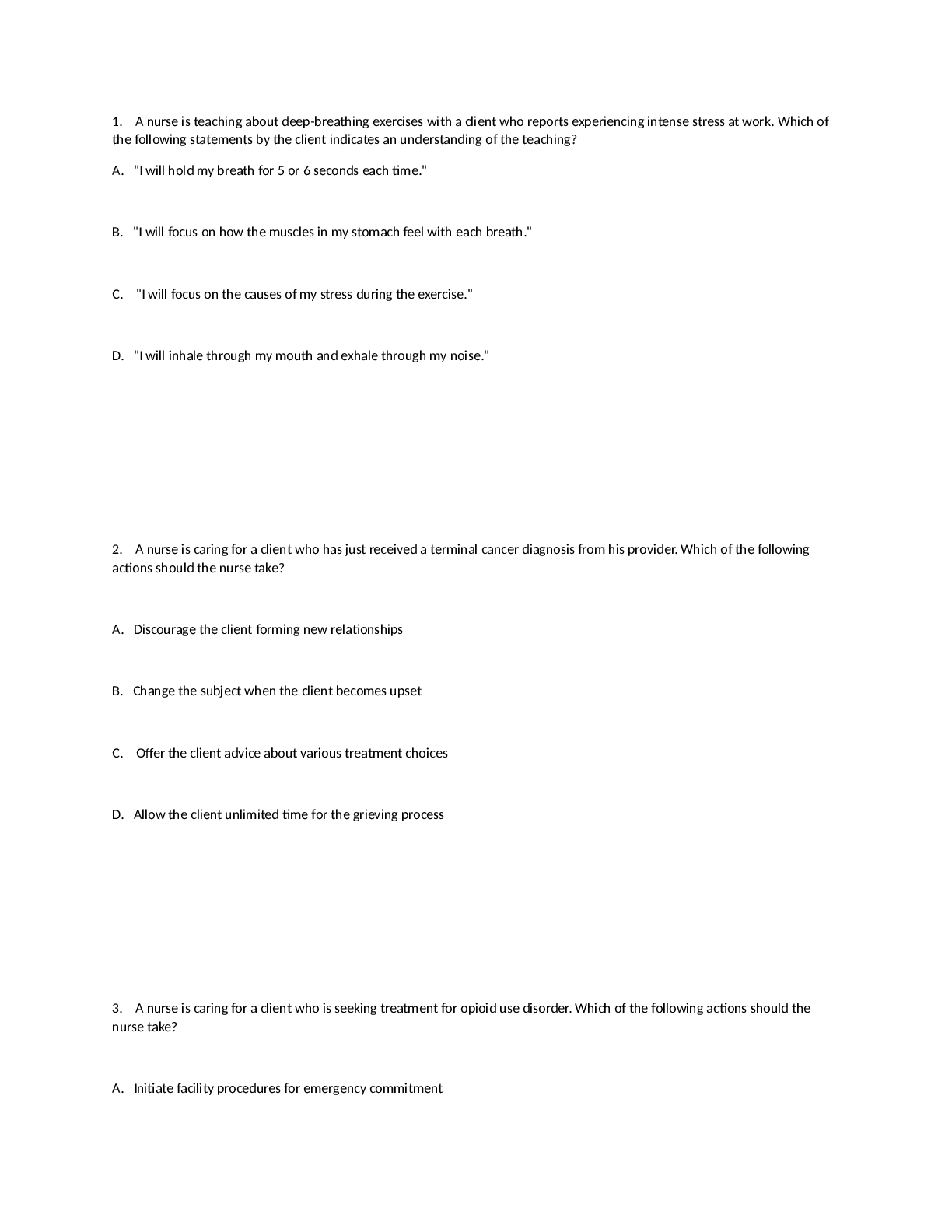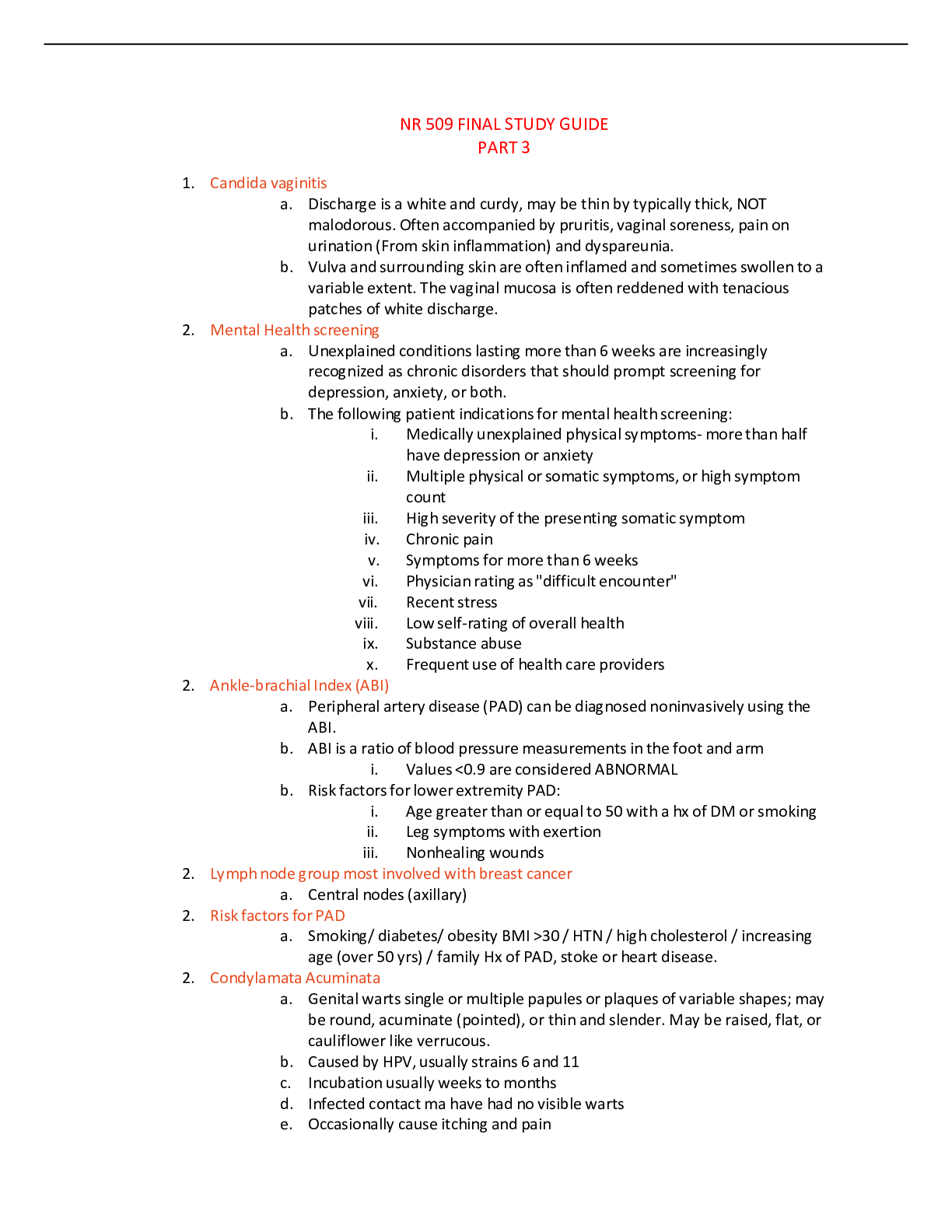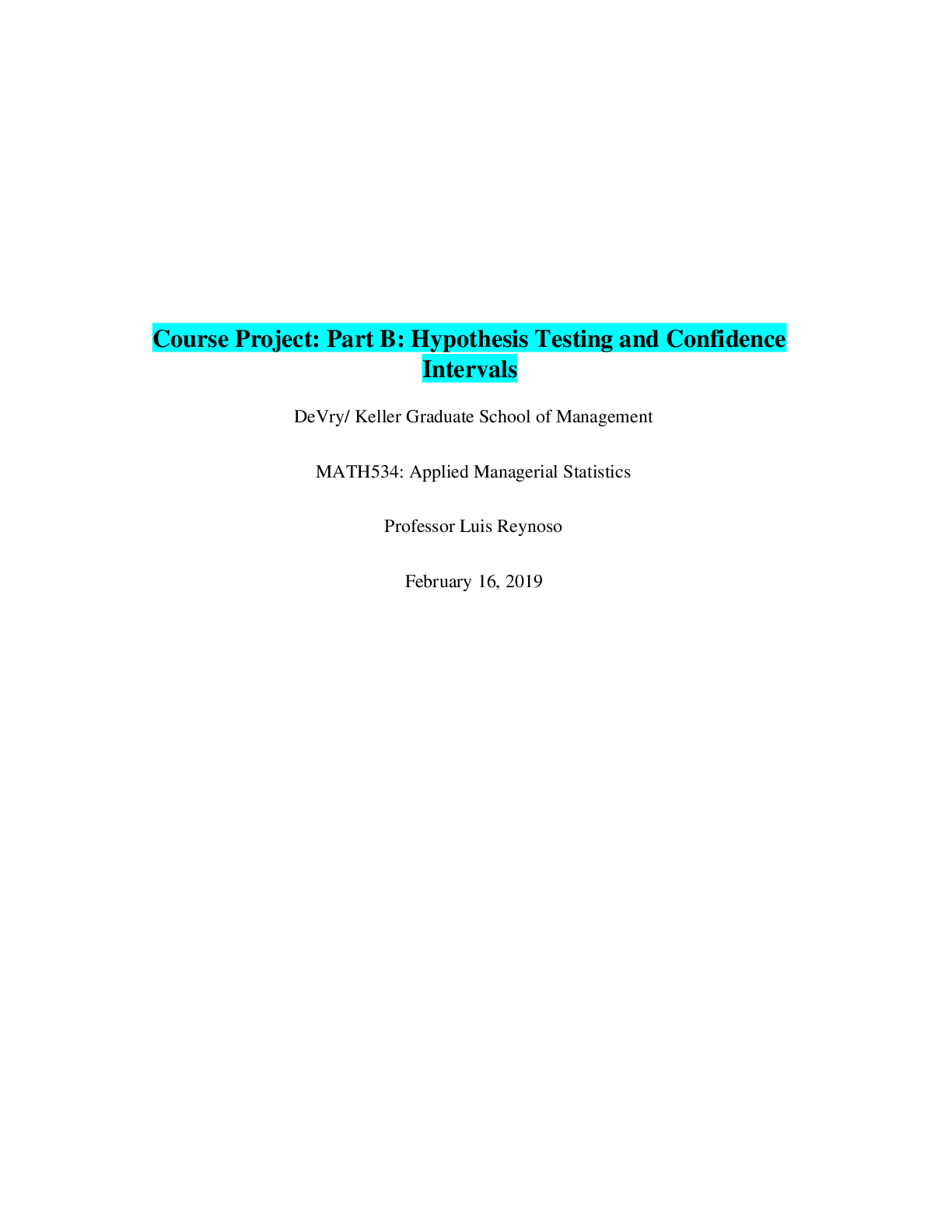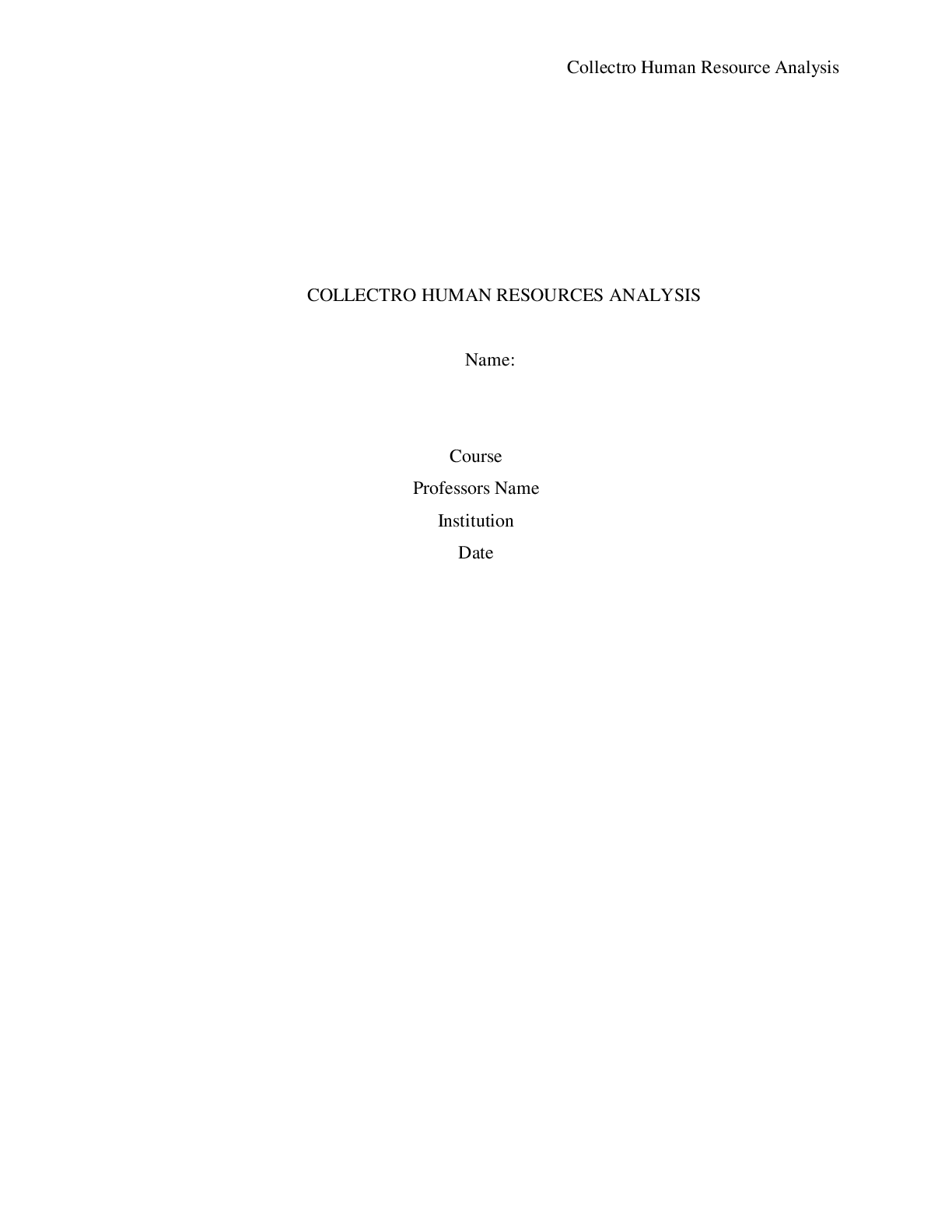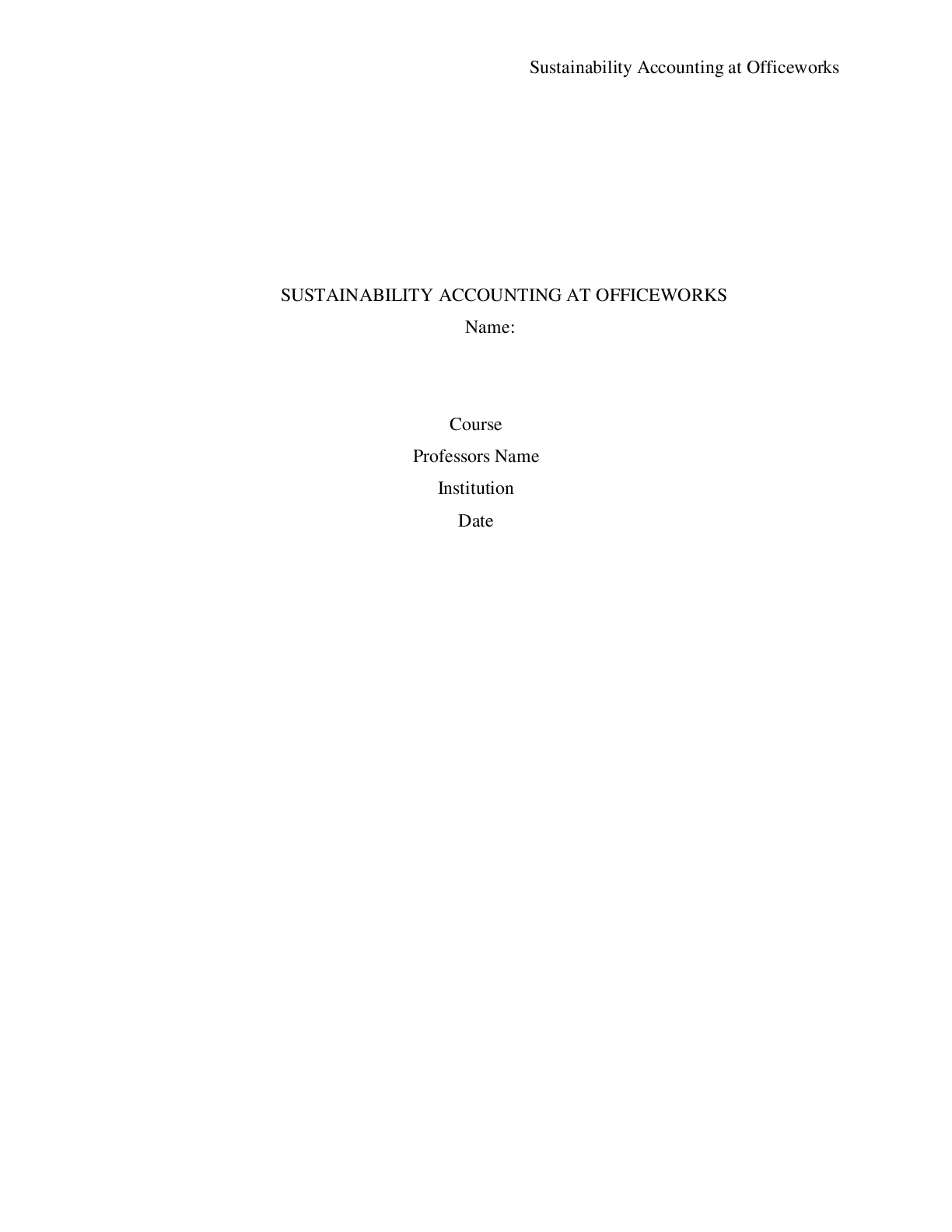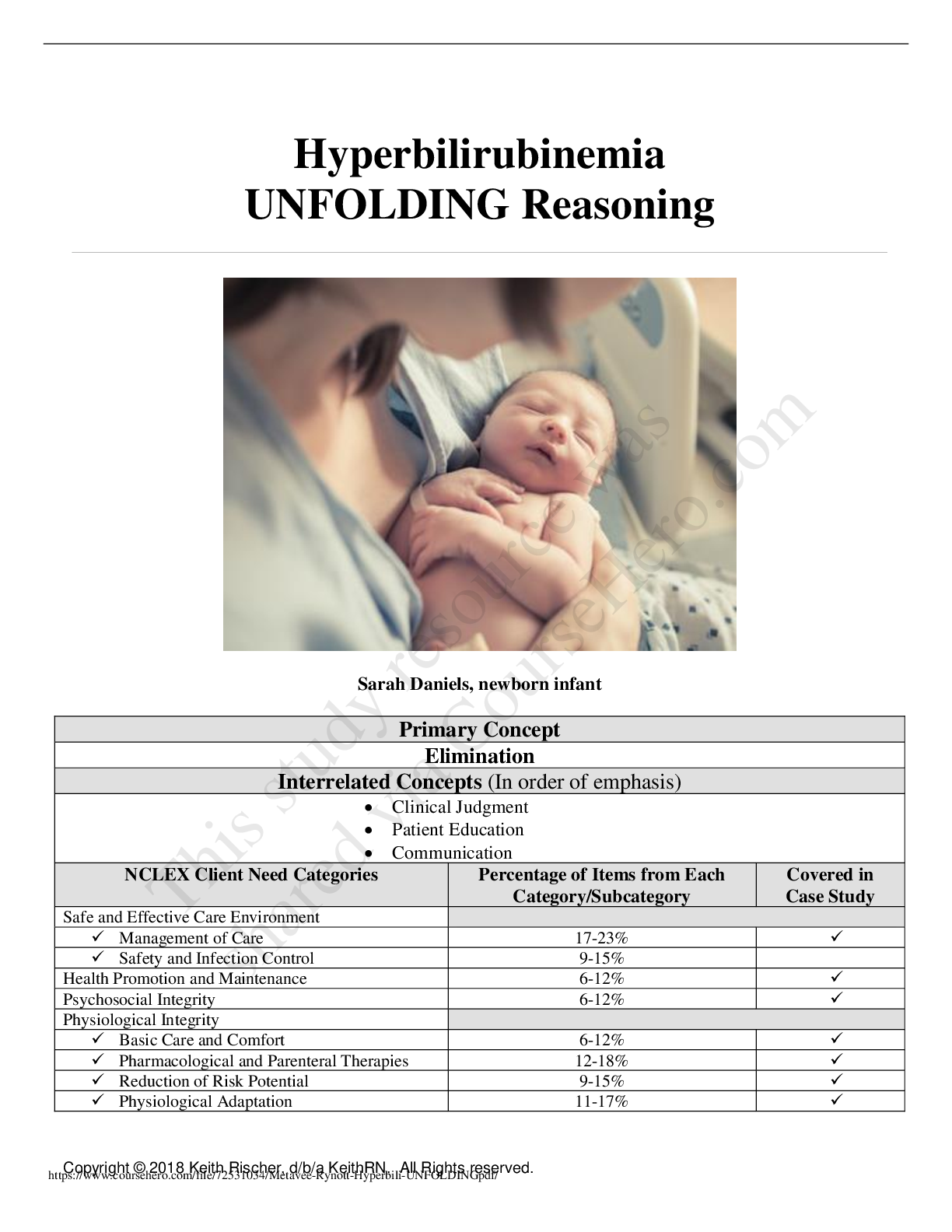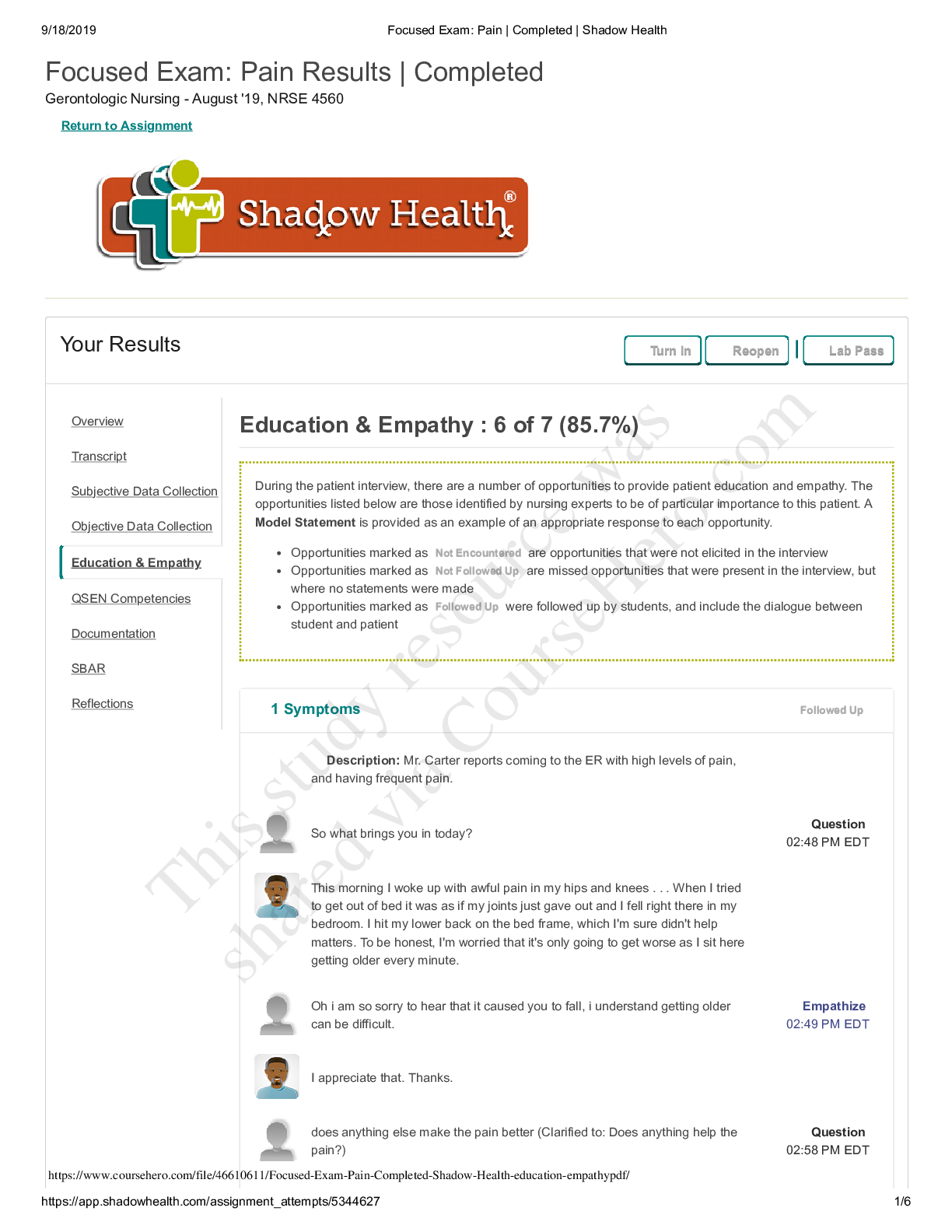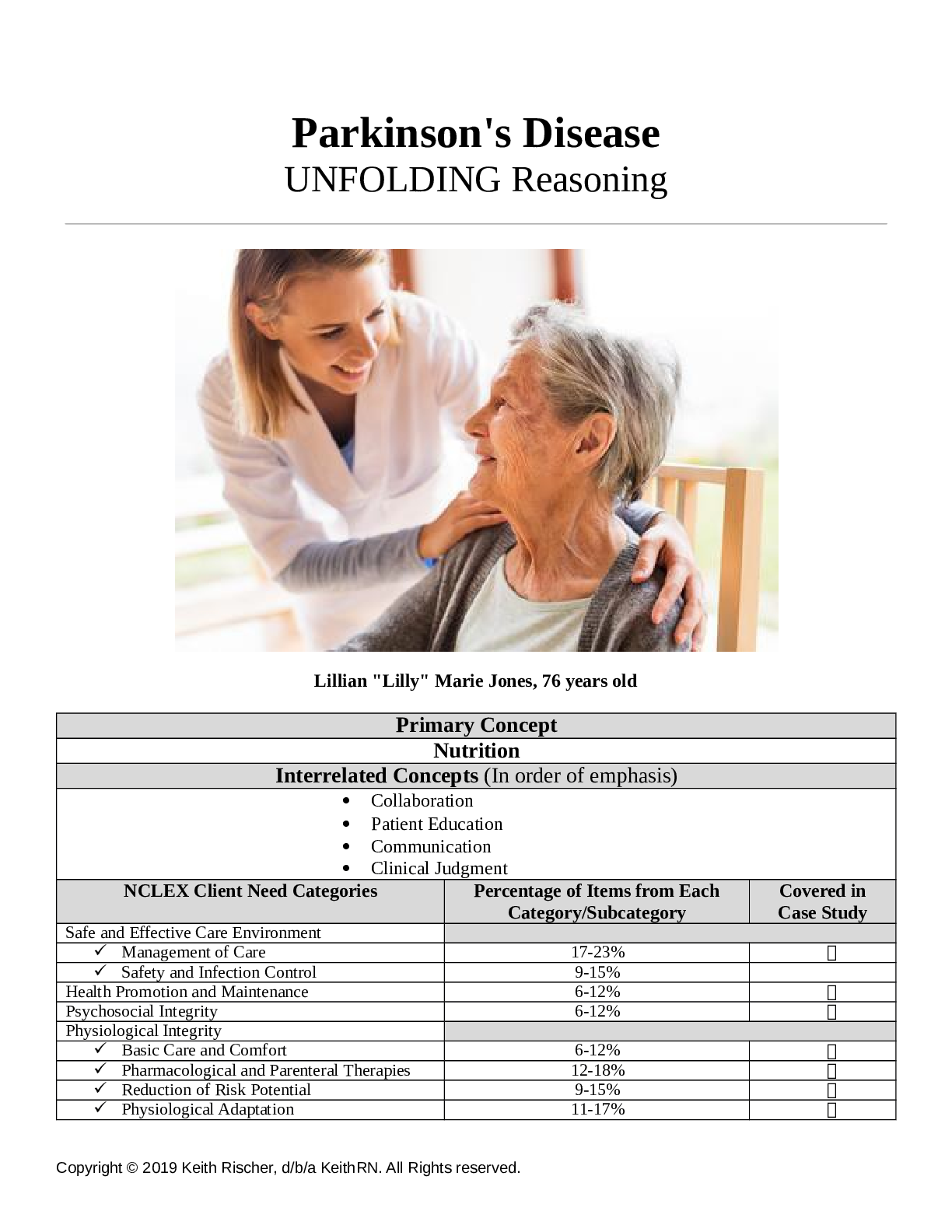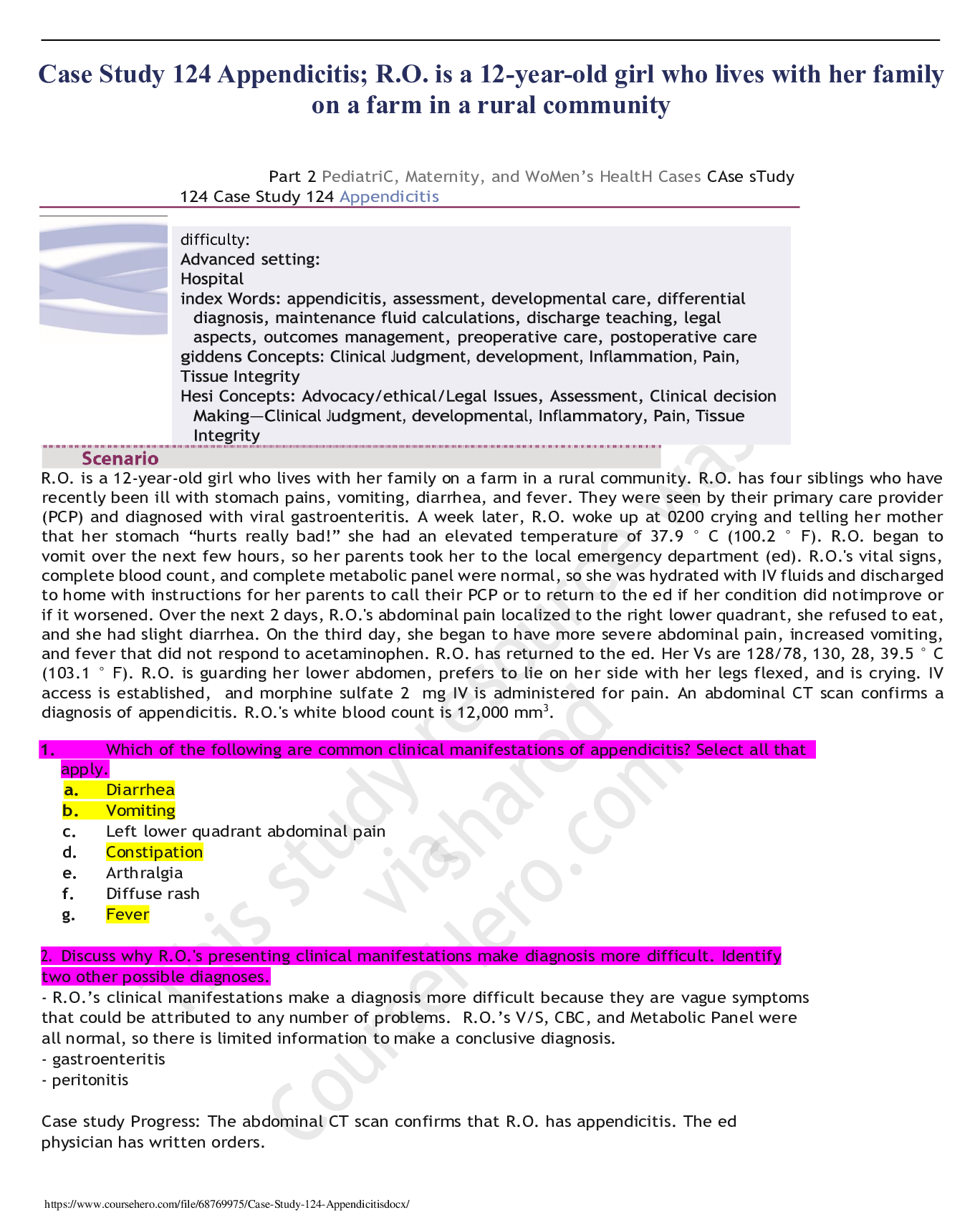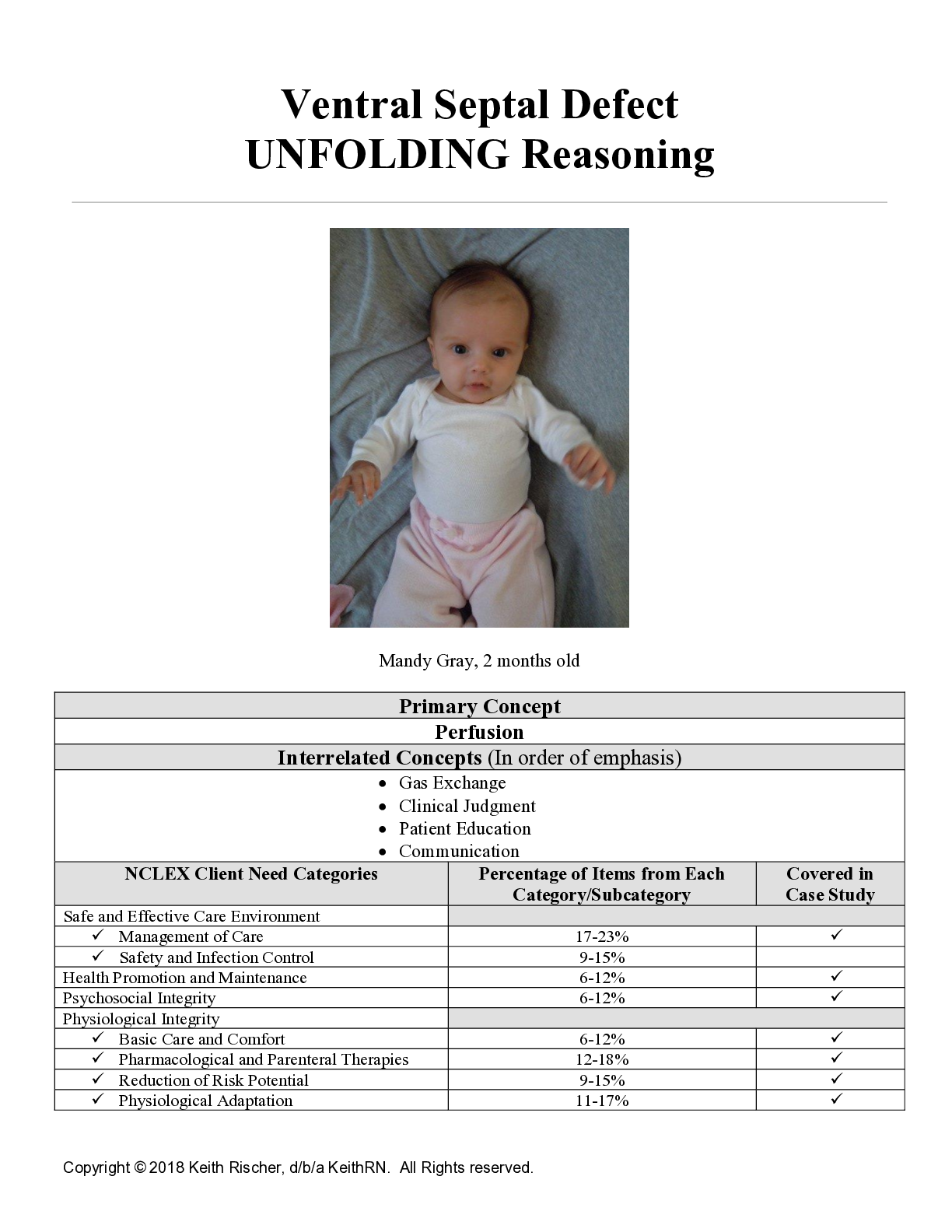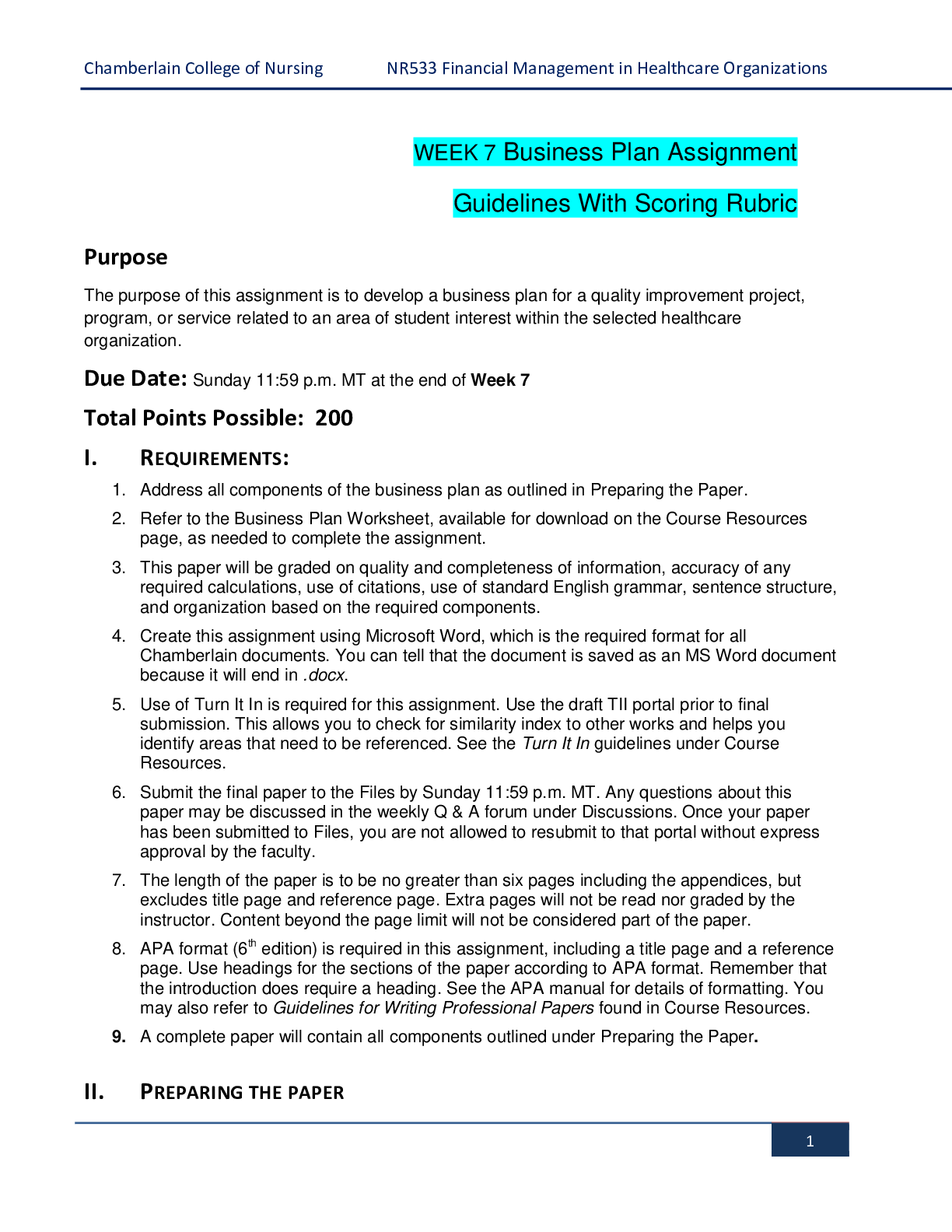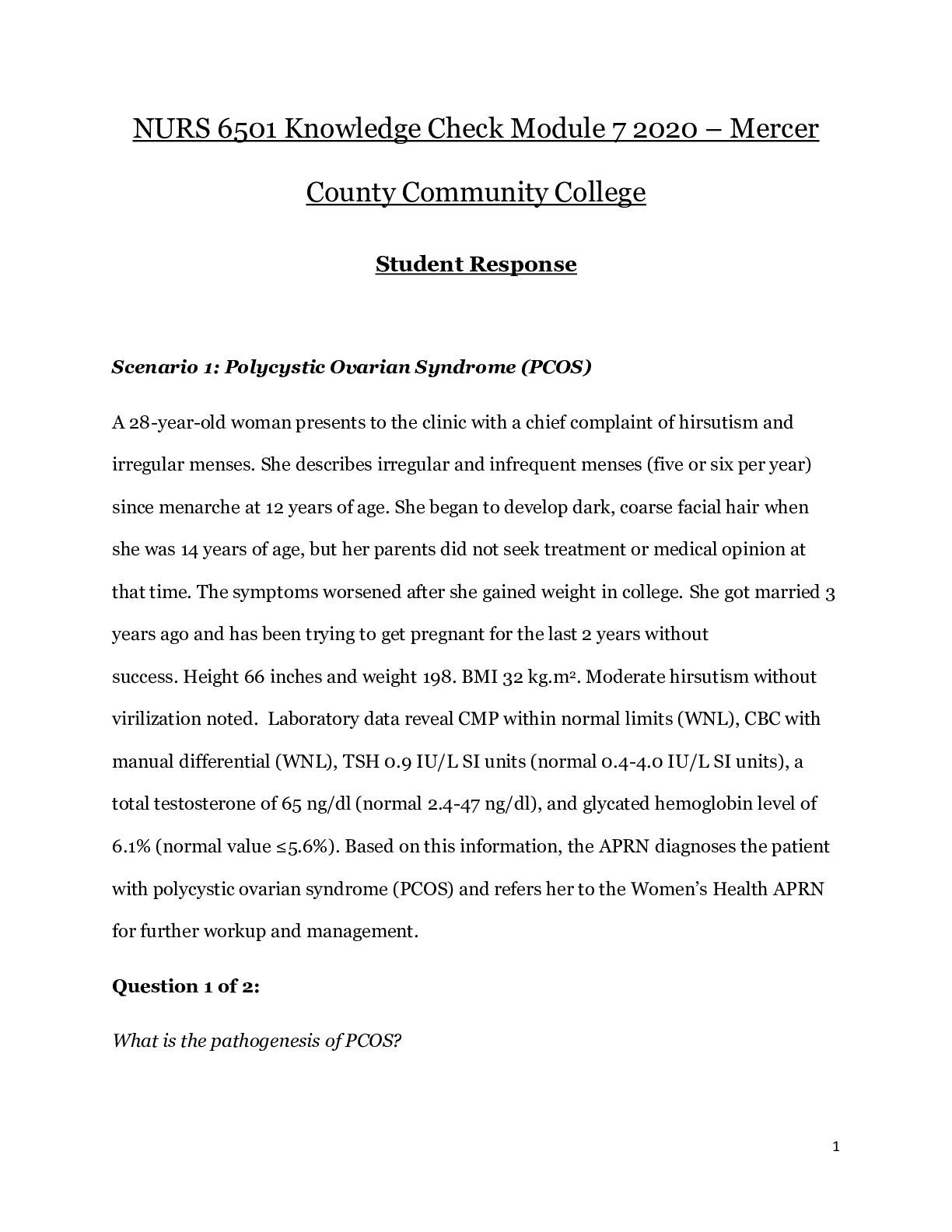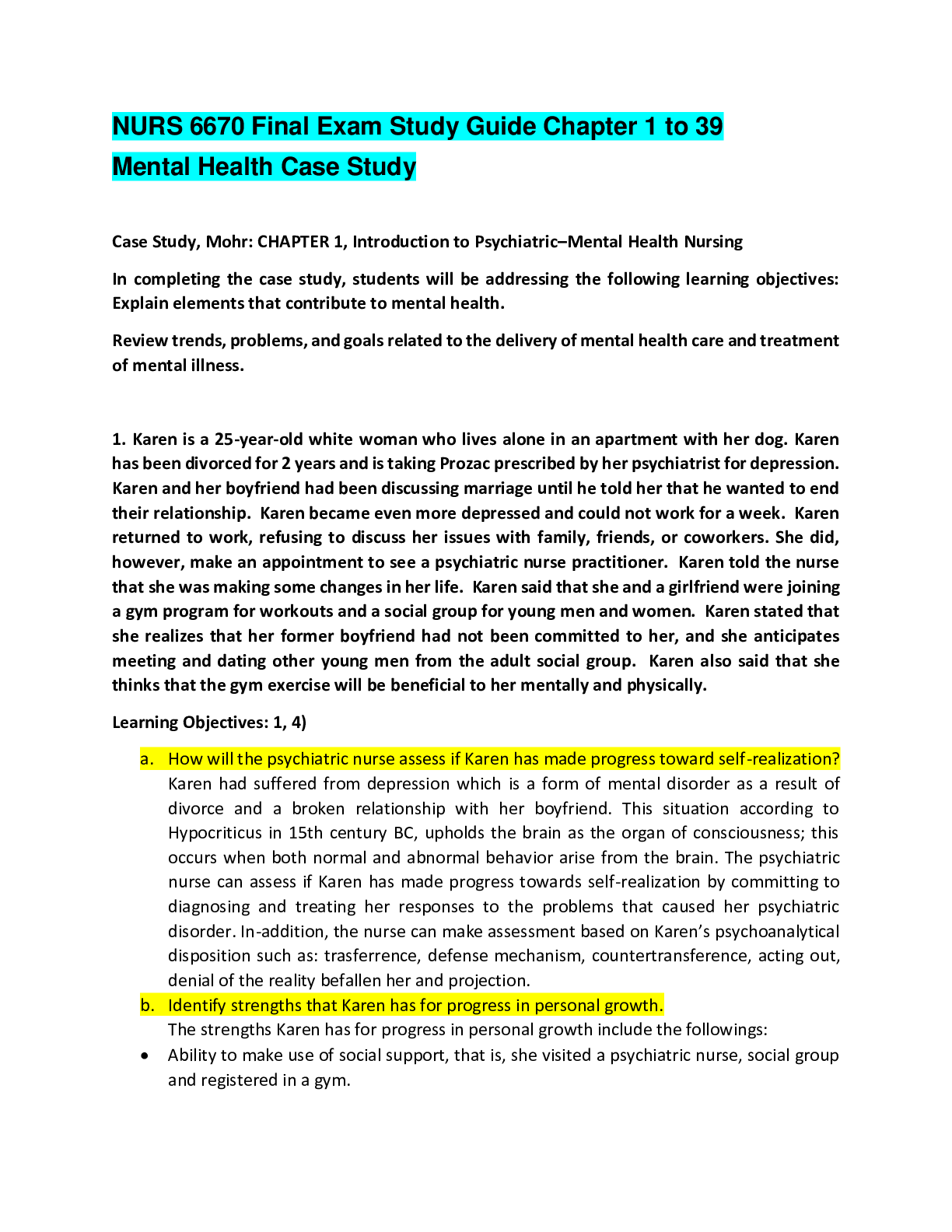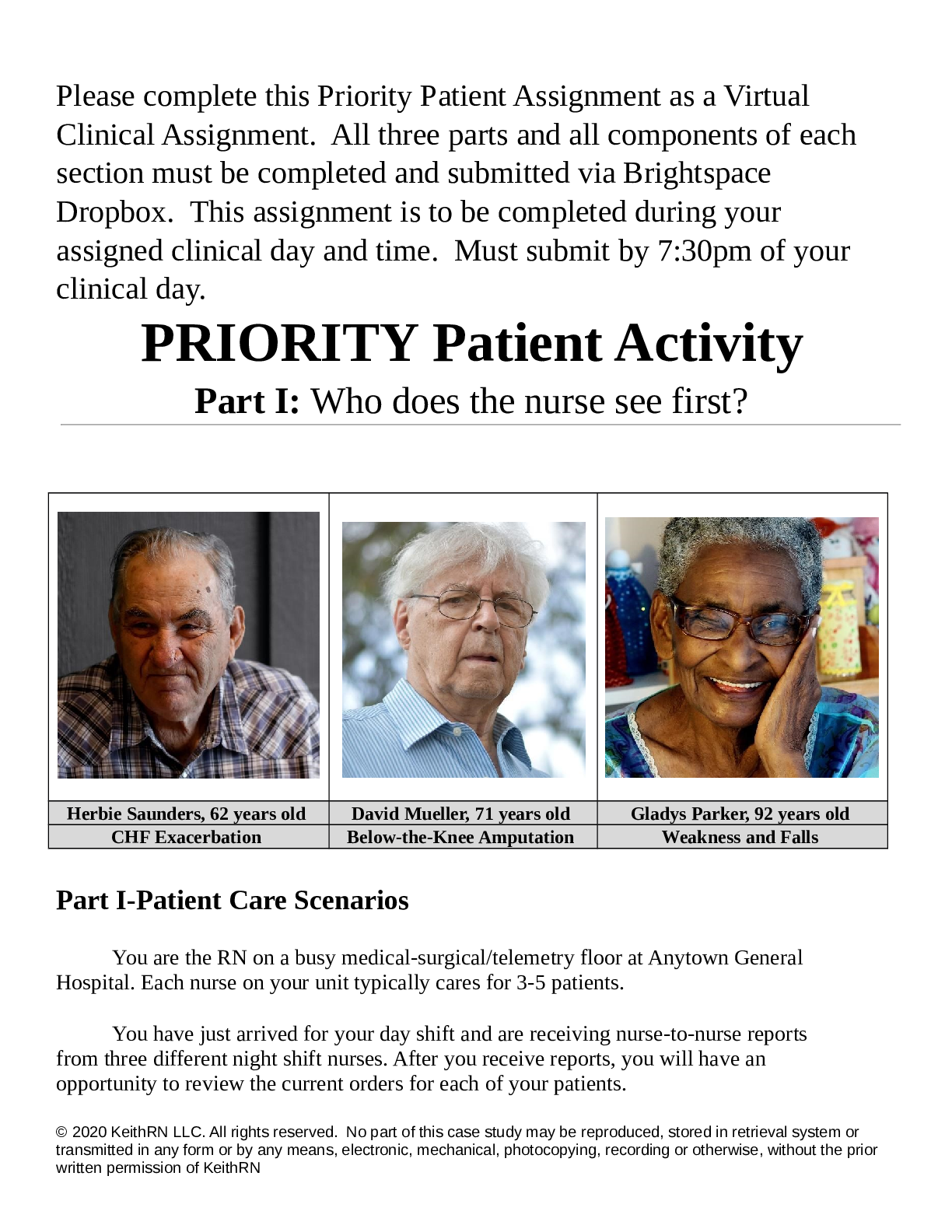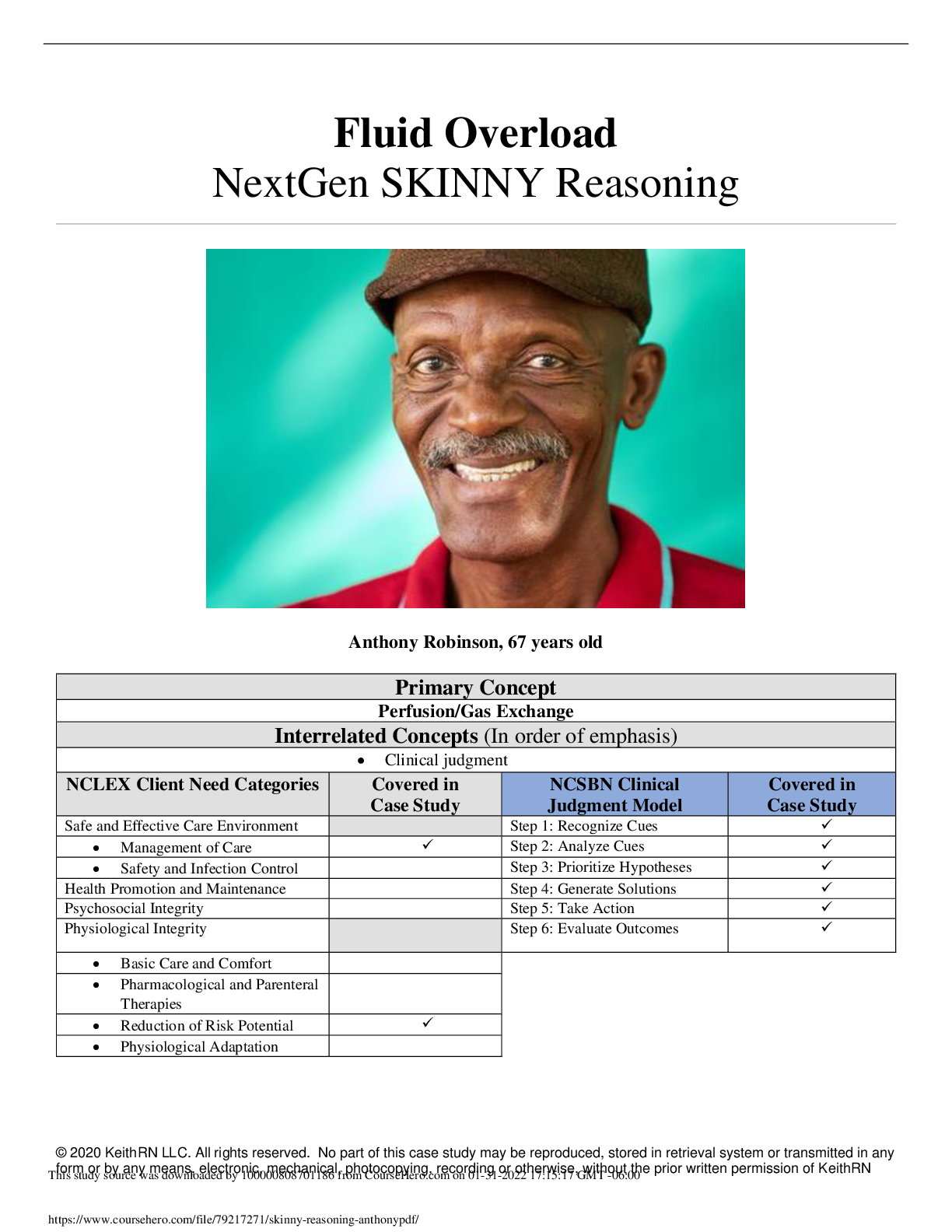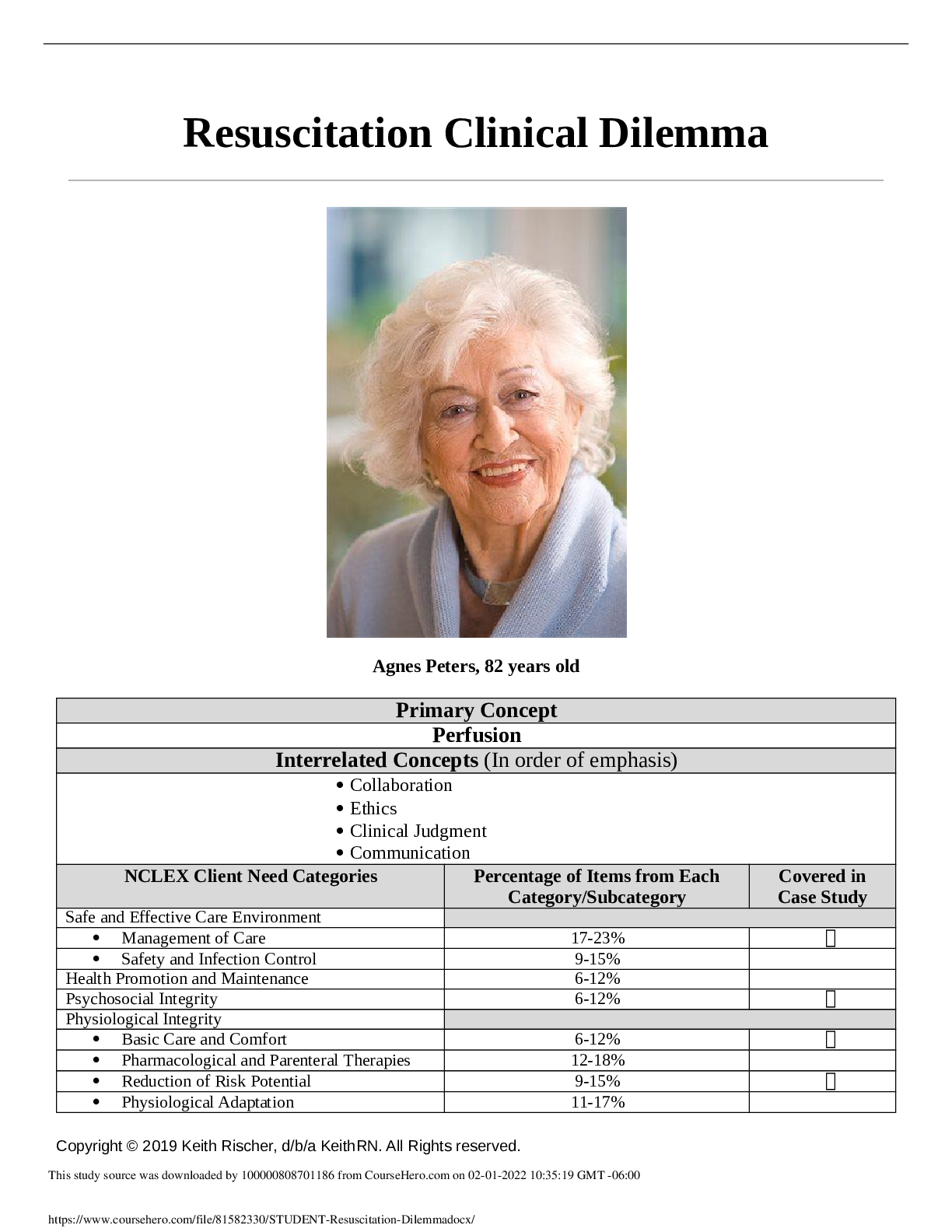*NURSING > CASE STUDY > NR 509 Final Study Guide/ COMPLETE SOLUTION (All)
NR 509 Final Study Guide/ COMPLETE SOLUTION
Document Content and Description Below
NR 509 Final Study Guide Chapter 5 - Behavior and Mental Status -Know what persevervation is when talking about using words repeatedly (p.162) o Variations and abnormalities in thought processes o... Persistent repetition of words or ideas o Occurs in schizophrenia and other psychotic disorders Know that suicide/depression assessment tools should be used and if patient scores positive, ask o if there is a plan, ask pt to make pact to not commit suicide -Functional Syndrome: o several related syndromes characterized by symptoms, suffering, and disability with little demonstrable tissue abnormalities. Includes IBS, fibromyalgia, chronic fatigue, TMJ disorder, and multiple chemical sensitivity reach 30% to 90%, depending on the disorders compared o The prevalence of symptom overlap is high in the common functional syndromes namely, complaints of fatigue, sleep disturbance, musculoskeletal pain, headache, and gastrointestinal problems. o The common functional syndromes also overlap in rates of functional impairment, psychiatric comorbidity, and response to cognitive and antidepressant therapy. -Speech Patterns: o Disorders of speech fall into three groups affecting: (1) phonation of the voice, (2) the articulation of words, and (3) the production and comprehension of language. o Aphonia refers to a loss of voice that accompanies disease affecting the larynx or its nerve supply. o Dysphonia refers to less severe impairment in the volume, quality, or pitch of the voice. For example, a person may be hoarse or only able to speak in a whisper. Causes include laryngitis, laryngeal tumors, and unilateral vocal cord paralysis (CN X). o Dysarthria refers to a defect in the muscular control of the speech apparatus (lips, tongue, palate, or pharynx). Words may be nasal, slurred, or indistinct, but the central symbolic aspect of language remains intact. Causes include motor lesions of the CNS or PNS, parkinsonism, and cerebellar disease. o Aphasia refers to a disorder in producing or understanding language. It is often caused by lesions in the dominant cerebral hemisphere, usually the left. -Generalized Anxiety Disorder: o Excessive worry persisting over a 6-month period suggests a possible anxiety disorder, one of the most prevalent psychiatric conditions in the United States, with a lifetime prevalence of approximately 3%. -Screening for depression: o For patients with depression or thought disorders such as schizophrenia, take a careful history of their symptoms and course of illness. Watch for mood changes or symptoms such as fatigue, unusual tearfulness, appetite or weight changes, insomnia, and vague somatic complaints. Two validated screening questions for depression are: “Over the past 2 weeks, have you felt down, depressed, or hope-less?” and “Over the past 2 weeks, have you felt little interest or pleasure in doing things?”85 If the patient seems depressed, always ask about suicide: “Have you ever thought about hurting yourself or ending your life?” As with chest pain, you must evaluate severity—both depression and angina are potentially lethal. o High yield screening questions for depression include: Over the past 2 weeks, have you felt down, depressed, or hopeless? Over the past 2 weeks, have you felt little interest or pleasure in doing things (anhedonia)? o A positive test response has a sensitivity of 83% and a specificity of 92% for detecting major depression. 45 All positive screening tests warrant full diagnostic inter-views. Failure to diagnose depression can have fatal consequences—the presence of an affective disorder is associated with an 11-fold increased risk for suicide. -Depressive Disorders: o Depressive and bipolar disorders affect over 9% of the U.S. population. About 16 million adult Americans, or almost 7%, have major depression, often with coexisting anxiety disorders and substance abuse. Depression is nearly twice as common in women as men; the prevalence of postpartum depression is 7% to 13%. Depression frequently accompanies chronic medical illness. High-risk patients may have subtle early signs of depression, NR 509 Final Study Guide o including low self-esteem, loss of pleasure in daily activities (anhedonia), sleep disorders, and difficulty concentrating or making decisions. -Schizophrenia: -Mental status exam: [Show More]
Last updated: 1 year ago
Preview 1 out of 22 pages

Reviews( 0 )
Document information
Connected school, study & course
About the document
Uploaded On
Jul 23, 2021
Number of pages
22
Written in
Additional information
This document has been written for:
Uploaded
Jul 23, 2021
Downloads
0
Views
36


